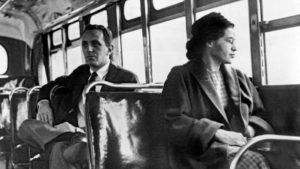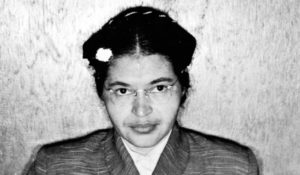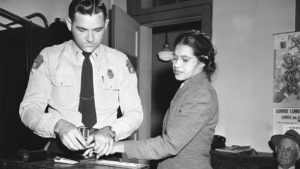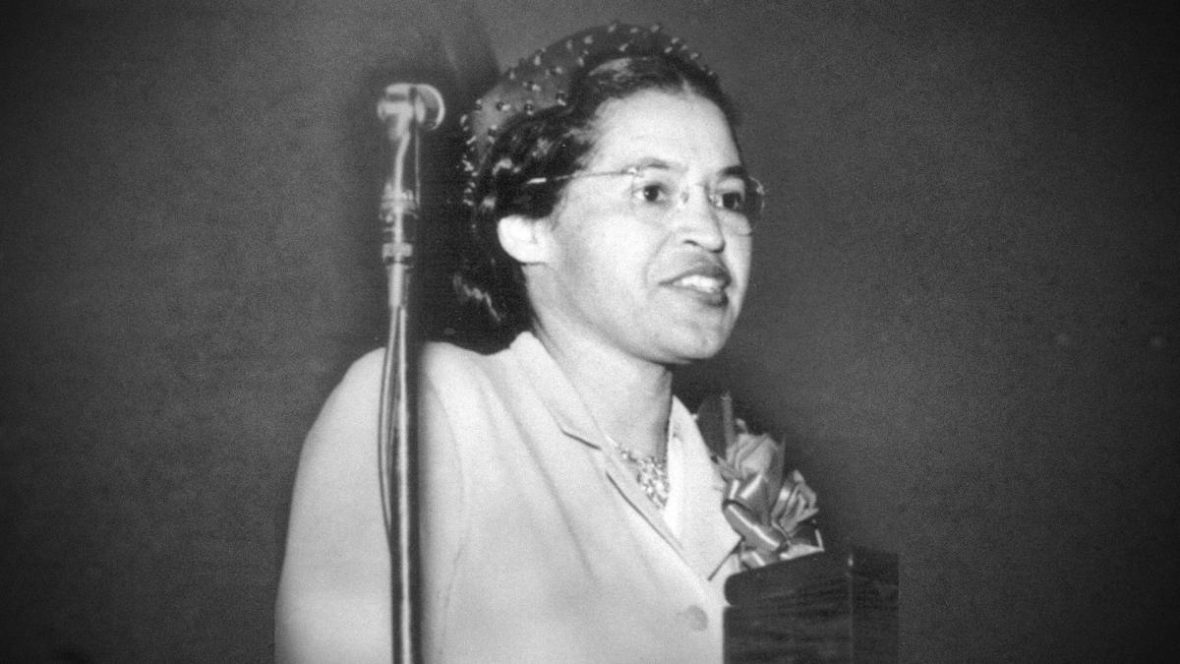Rosa Louise McCauley Parks was an activist in the civil rights movement best known for her pivotal role in the Montgomery Bus Boycott. The United States Congress has called her, “the first lady of civil rights,” and, “the mother of the freedom movement.” Take a look below for 30 more fascinating and interesting facts about Rosa Parks.
1. On December 1, 1955, in Montgomery, Alabama, Parks refused to obey bus driver James F. Blake’s order to give up her seat in the “colored section” to a white passenger, after the whites-only section was filled.
2. Parks wasn’t the first person to resist bus segregation, but the NAACP believed that she was the best candidate for seeing through a court challenge after her arrest for civil disobedience in violating Alabama segregation laws.
3. Parks’ prominence in the community and her willingness to become a controversial figure inspired the black community to boycott Montgomery buses for over a year.
4. Her case became bogged down in the state courts, but the federal Montgomery bus lawsuit Browder v. Gayle succeeded in November, 1956.
5. Parks’ act of defiance and the Montgomery bus boycott became important symbols of the movement as she became an international icon of resistance to racial segregation.

6. She organized and collaborated with civil rights leaders, including Edgar Nixon, who was the president of the local chapter of the NAACP.
7. She collaborated with Martin Luther King, Jr., who was a new minister in Montgomery that gained national prominence in the civil rights movement.
8. At the time, Parks was secretary of the Montgomery chapter of the NAACP.
9. Although widely honored in later years, she also suffered for her act. She was fired from her job as a seamstress in a local department store, and received death threats for years afterwards.
10. Shortly after the boycott, she moved to Detroit, where she briefly found similar work.
11. From 1965 to 1988, she served as secretary and receptionist to John Conyers, an African-American U.S. Representative.

12. She was active in the Black Power movement and the support of political prisoners in the United States.
13. After retirement, Parks wrote her autobiography and continued to insist that the struggle for justice wasn’t over and that there was more work to be done.
14. In her final years, she suffered from dementia.
15. Parks received national recognition, including the NAACP’s 1979 Spingarn Medal, the Presidential Medal of Freedom, the Congressional Gold Medal, and a posthumous statue in the United States Capitol’s National Statuary Hall.
16. Upon her death in 2005, she was the first woman and third non-U.S. government official to lie in honor in the Capitol Rotunda.
17. California and Missouri commemorate Rosa Parks Day on her birthday February 4, while Ohio and Oregon commemorate the occasion on the anniversary of the day she was arrested, December 1.
18. Her husband, Raymond, joined the NAACP in 1932 and helped raise funds for the Scottsboro boys.
19. In 1944, she briefly worked at Maxwell Air Force Base, which was her first experience with integrated services.

20. One of her jobs within the NAACP was as an investigator and activist against sexual assaults on black women.
21. She helped form the Alabama Committee for Equal Justice for Mrs. Recy Taylor. The committee was described by the Chicago Defender as, “the strongest campaign for equal justice to be seen in a decade.”
22. In the summer of 1955, she attended the Highlander Folk School, an education center for activism in workers’ rights and racial equality in Monteagle, Tennessee.
23. The refusal to give up her seat was the second time that Parks had encountered the bus driver, James Blake. In 1943, he ordered her to leave the bus and re-enter through the rear door, as was the law. When Parks exited the bus, Blake drove off and left her in the rain.
24. Her refusal to relinquish her seat came nine months after teenager Claudette Colvin was arrested for the very same thing.
25. The Montgomery Bus Boycott led to the formation of a new organization, the Montgomery Improvement Association. The organization was led by the then-unknown Dr. Martin Luther King, Jr.

26. Contrary to popular belief, she didn’t get along well with Martin Luther King, Jr. They had a warm, professional relationship, but she disagreed with many of his decisions during her time in Montgomery. She also never worked for Dr. King.
27. Park’s trial lasted 30 minutes. She was found guilty of disorderly conduct and violating a local ordinance and fined $10, plus $4 in court fees.
28. Bus No. 2857, on which Parks was riding, is restored and on display in The Henry Ford history museum in Michigan.
29. In 1980, she co-founded the Rosa L. Parks Scholarship Foundation for college-bound high school seniors.
30. Rosa Parks, along with Elaine Eason Steel, started the Rosa and Raymond Parks Institute for Self Development in February of 1987. The Institute’s main function was to run the “Pathways to Freedom” bus tours, which take young people around the country to visit historical sites along the Underground Railroad and to important locations of events in Civil Rights history.




